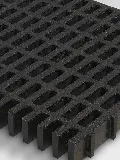loading...
- No. 9, Xingyuan South Street, Dongwaihuan Road, Zaoqiang County, Hengshui, Hebei, China
- admin@zjcomposites.com
- +86 15097380338
- Welcome to visit our website!
Durable Composite Reinforcement with FRP Steel Bars for Enhanced Structural Performance
The Advancements and Applications of FRP Steel Bars in Modern Construction
In recent years, the construction industry has seen a remarkable shift towards the use of innovative materials aimed at enhancing durability, reducing weight, and offering sustainable building solutions. One such innovation is the Fiber-Reinforced Polymer (FRP) steel bar, which has emerged as a game-changer in reinforcing concrete structures. This article delves into what FRP steel bars are, their advantages over traditional steel bars, and the diverse applications they serve in modern construction.
Introduction to FRP Steel Bars
FRP steel bars are made from a composite material that combines high-strength fibers, such as glass or carbon, with a polymer resin matrix. This combination results in a lightweight, corrosion-resistant material that can outperform traditional steel rebar in several key aspects. Unlike traditional steel reinforcements, FRP bars are non-metallic and do not rust, making them an attractive choice for projects in corrosive environments such as coastal areas, chemical plants, and bridges.
Advantages of FRP Steel Bars
1. Corrosion Resistance One of the most significant benefits of FRP steel bars is their resistance to corrosion. Traditional steel bars can succumb to rust when exposed to moisture, salts, and other chemicals, leading to structural degradation over time. In contrast, FRP bars maintain their integrity, providing a longer service life for structures.
2. Lightweight Nature FRP bars are significantly lighter than their steel counterparts. This reduction in weight not only facilitates easier handling and transportation but also can lead to lower overall construction costs. The lighter weight allows for simplified designs and reduced foundation requirements.
3. High Strength-to-Weight Ratio Despite their lightweight nature, FRP bars possess a high tensile strength, making them ideal for reinforcing structures that require high load-bearing capabilities. Their superior strength-to-weight ratio allows engineers to optimize designs while ensuring safety and performance.
4. Electromagnetic Transparency FRP bars do not conduct electricity, making them suitable for applications in environments where electromagnetic interference is a concern, such as in underground structures or near sensitive electronic equipment.
5. Sustainability As the construction industry increasingly shifts towards sustainable practices, the use of FRP bars offers an eco-friendly alternative. Their longevity and resistance to corrosion mean reduced maintenance and repair needs, ultimately leading to lower resource consumption over the life cycle of a structure.
frp steel bar

Applications of FRP Steel Bars
The applications of FRP steel bars are vast, spanning various sectors within the construction industry
1. Bridges and Overpasses Due to their corrosion resistance and lightweight properties, FRP bars are ideal for use in bridge construction and overpasses, particularly in areas prone to road salt or saltwater exposure.
2. Marine Structures The marine environment is particularly challenging for traditional steel reinforcements. FRP bars are increasingly being used in piers, docks, and other marine structures where they can withstand continuous exposure to saltwater.
3. Tall Buildings and Towers The lightweight nature of FRP bars can significantly reduce the load on structural frameworks in tall buildings, allowing for innovative architectural designs without compromising safety.
4. Parking Structures and Industrial Facilities With their resistance to harsh chemicals and moisture, FRP bars are an excellent choice for reinforcing parking decks and industrial floors, where spills and exposure to various substances is common.
5. Repair and Rehabilitation FRP bars are also used in retrofitting existing structures, providing additional reinforcement without the need for significant modifications to the original design.
Conclusion
FRP steel bars represent a noteworthy evolution in construction materials, offering numerous advantages that align with the needs of modern society. As the industry continues to prioritize durability, sustainability, and cost-efficiency, the adoption of FRP technology is expected to grow. Specifiers and engineers keen on exploring the benefits of FRP bars can look forward to more innovative applications that will shape the future of construction, providing safer, more durable, and environmentally-friendly structures. With ongoing research and development in composite materials, the potential of FRP bars is likely to expand, further redefining standards in structural integrity and performance.
-
Transform Your Spaces with FRP Grating SolutionsNewsNov.04,2024
-
The Versatility and Strength of FRP RodsNewsNov.04,2024
-
The Excellence of Fiberglass Water TanksNewsNov.04,2024
-
The Benefits of FRP Grating for Your ProjectsNewsNov.04,2024
-
Elevate Your Efficiency with FRP Pressure VesselsNewsNov.04,2024
-
Welcome to the World of FRP Pressure VesselsNewsOct.12,2024
-
Unveiling the Future of Filtration: Why FRP Filter Vessels are a Game ChangerNewsOct.12,2024
